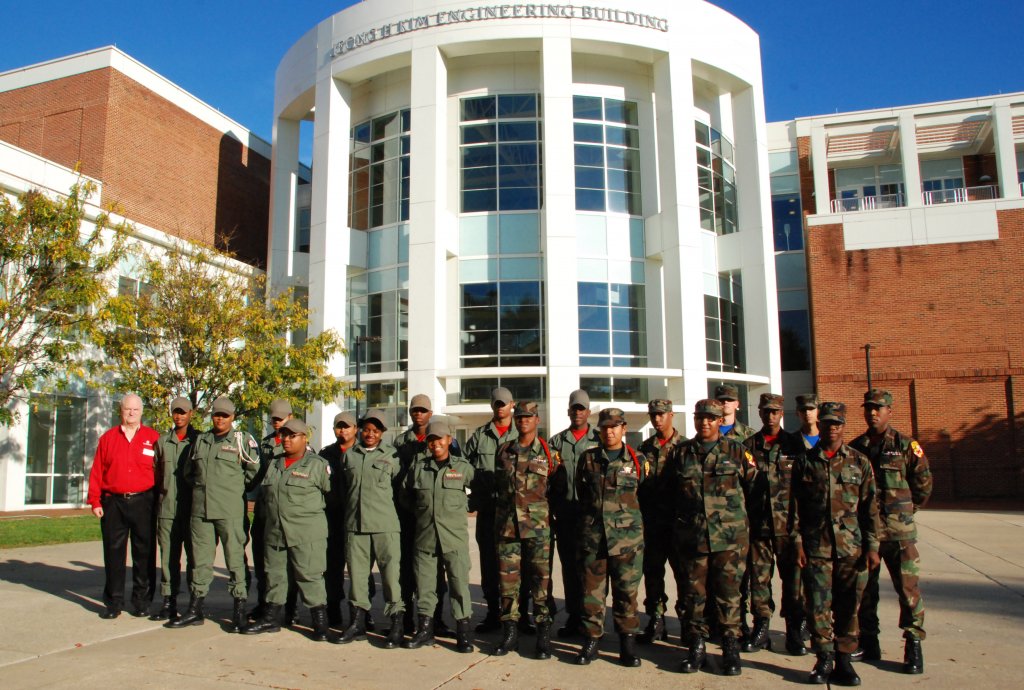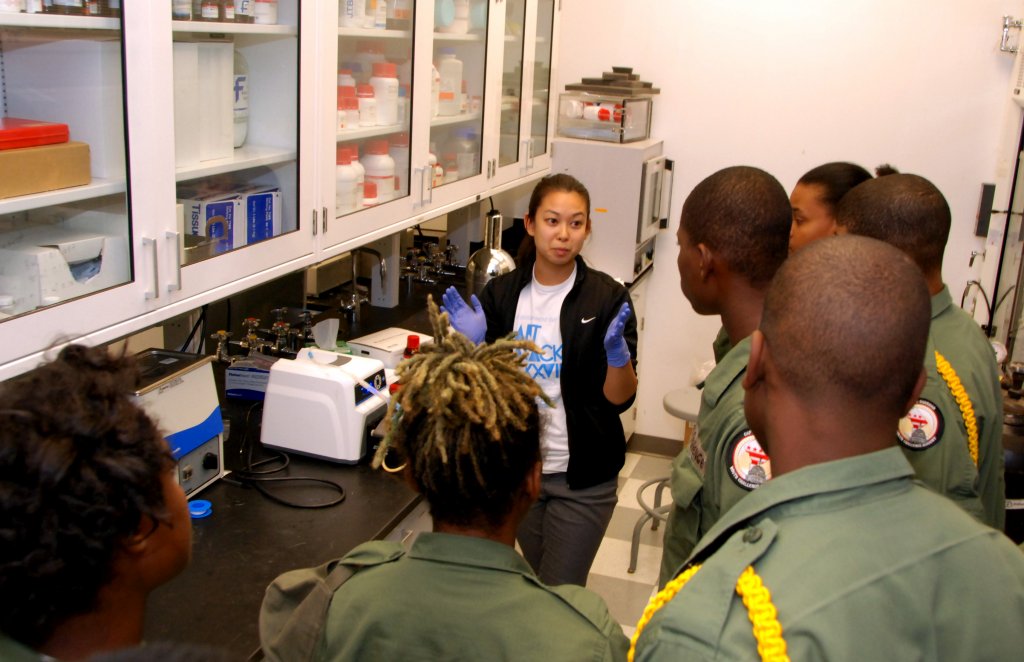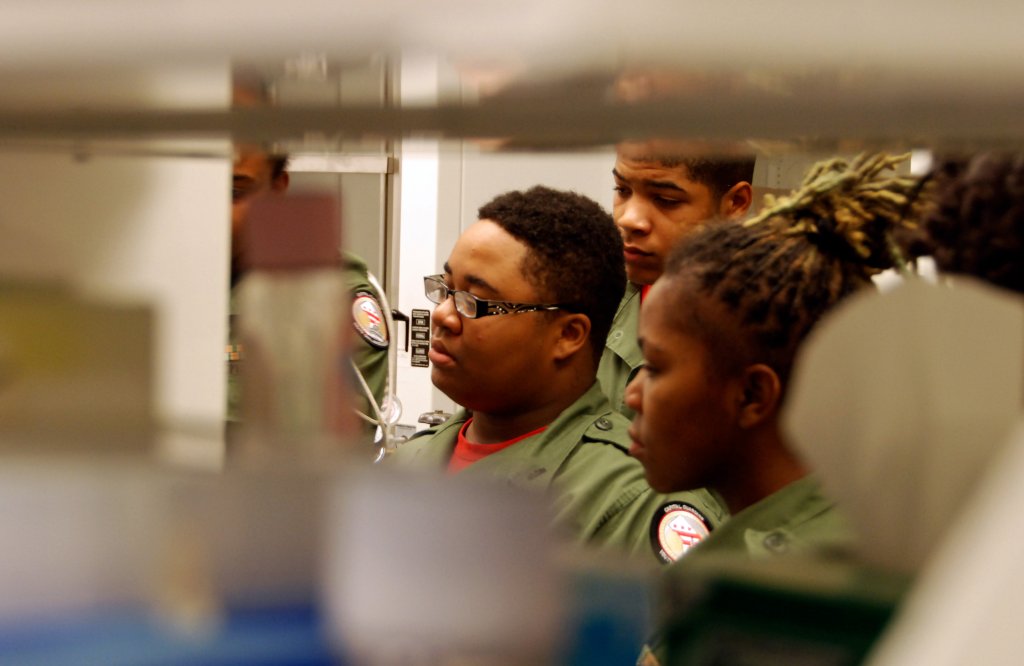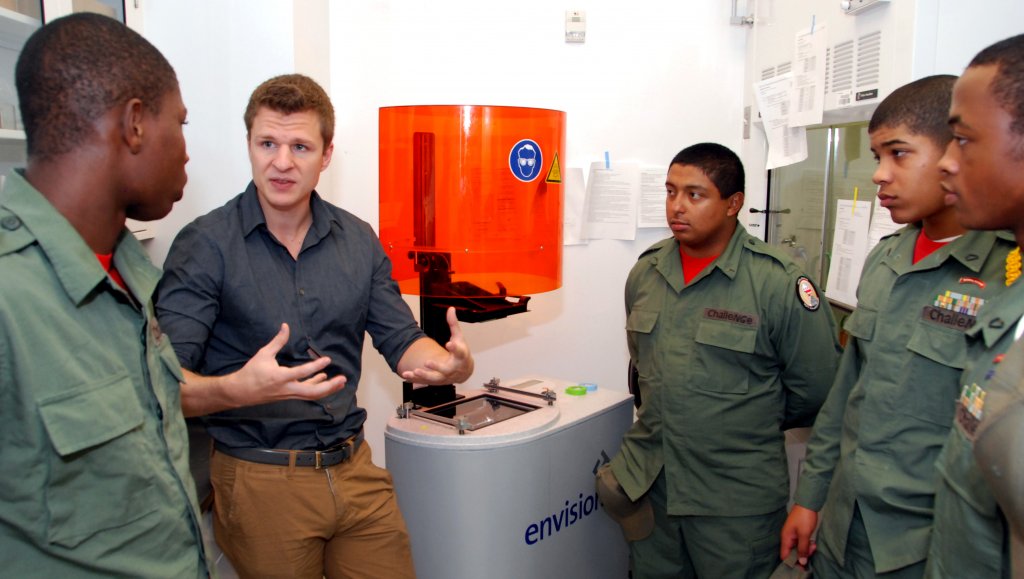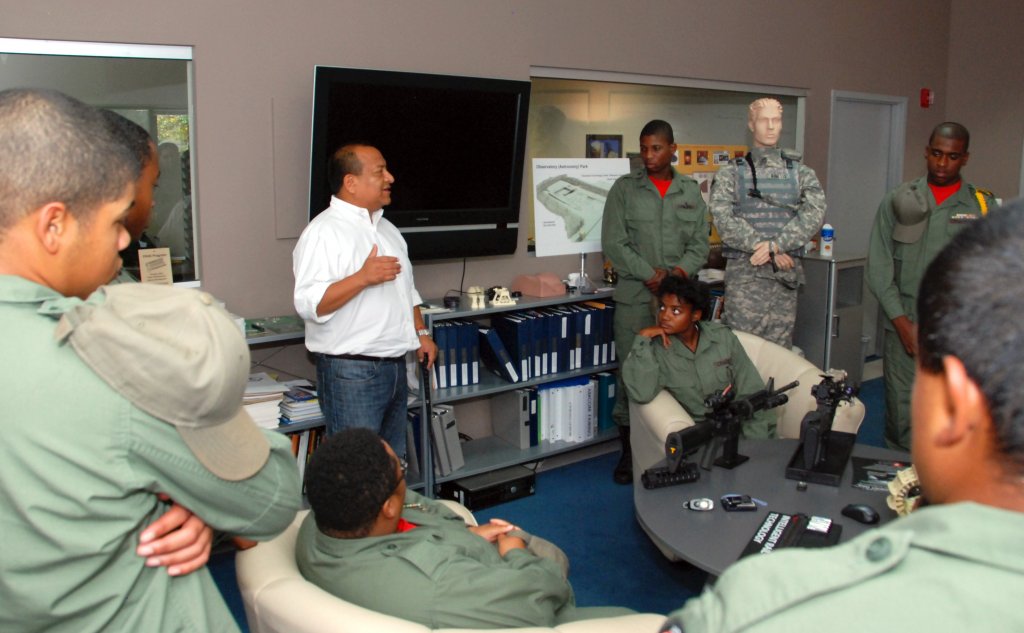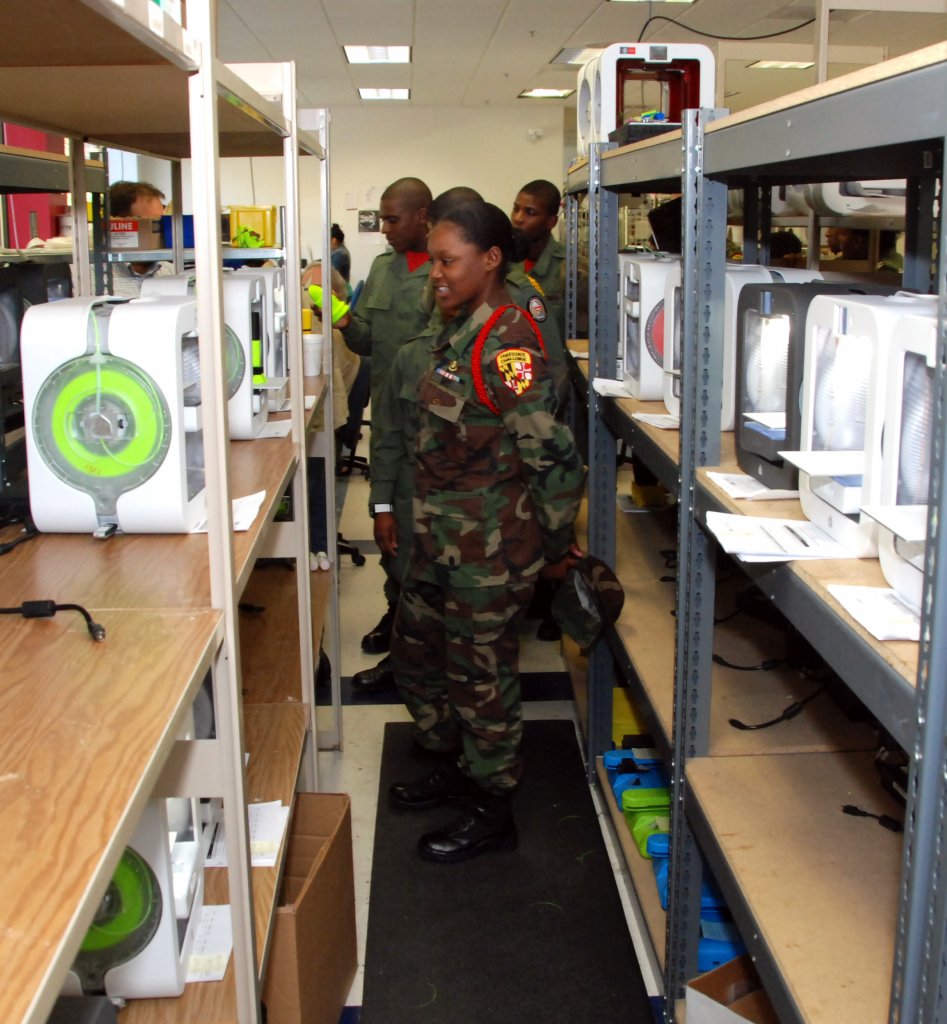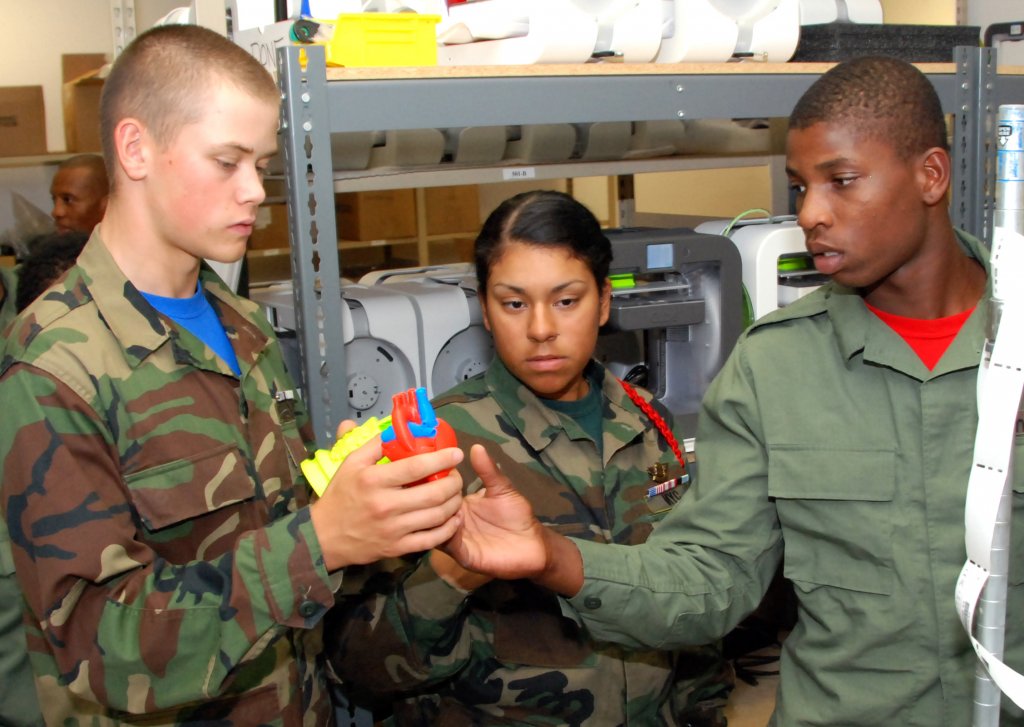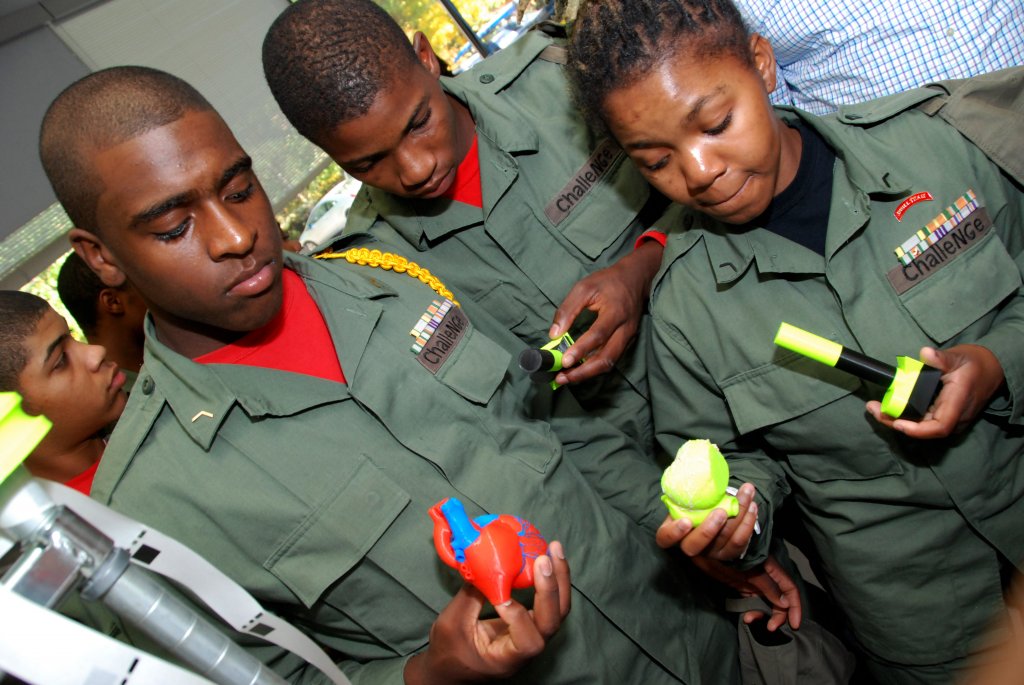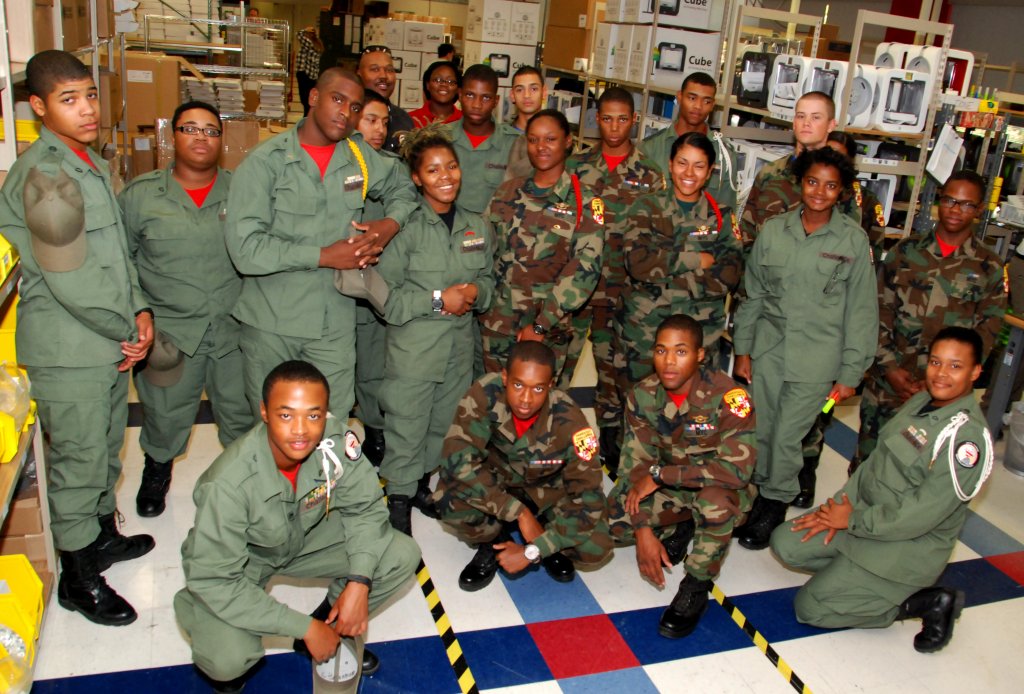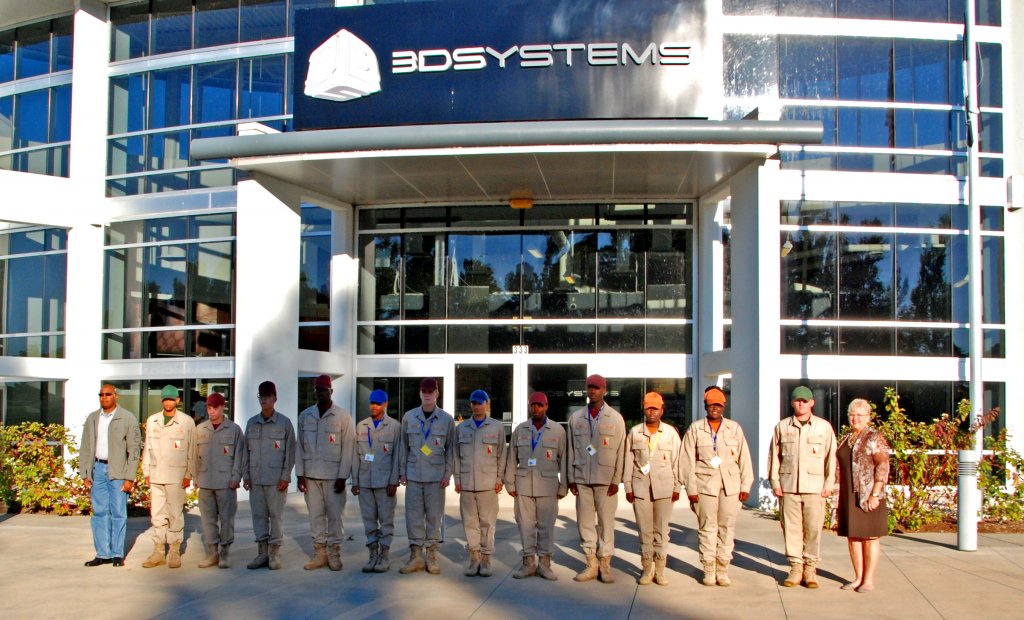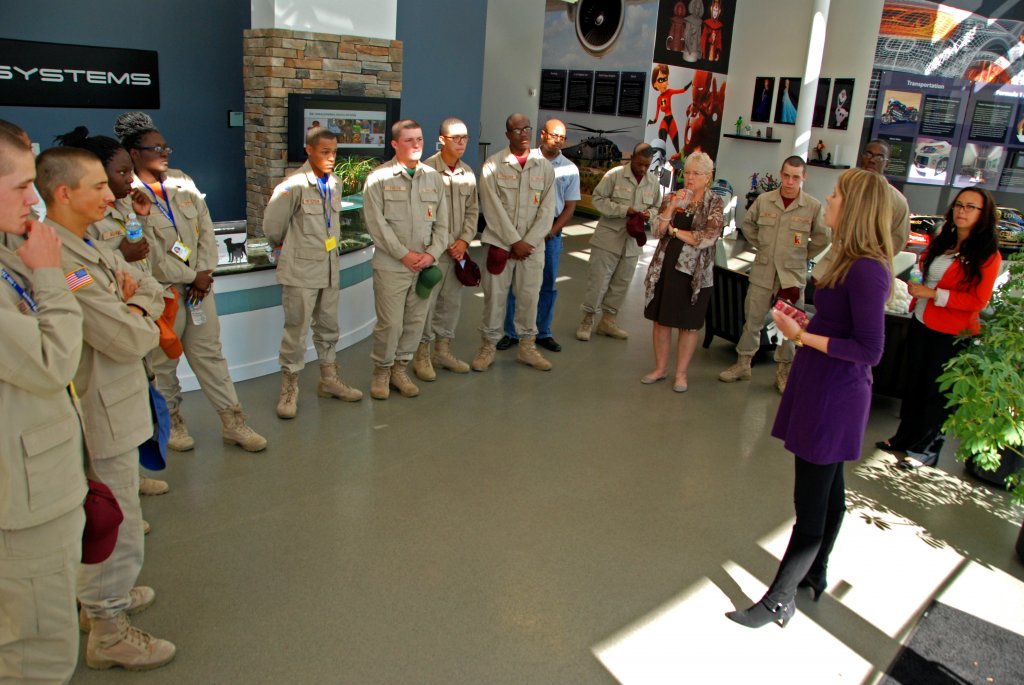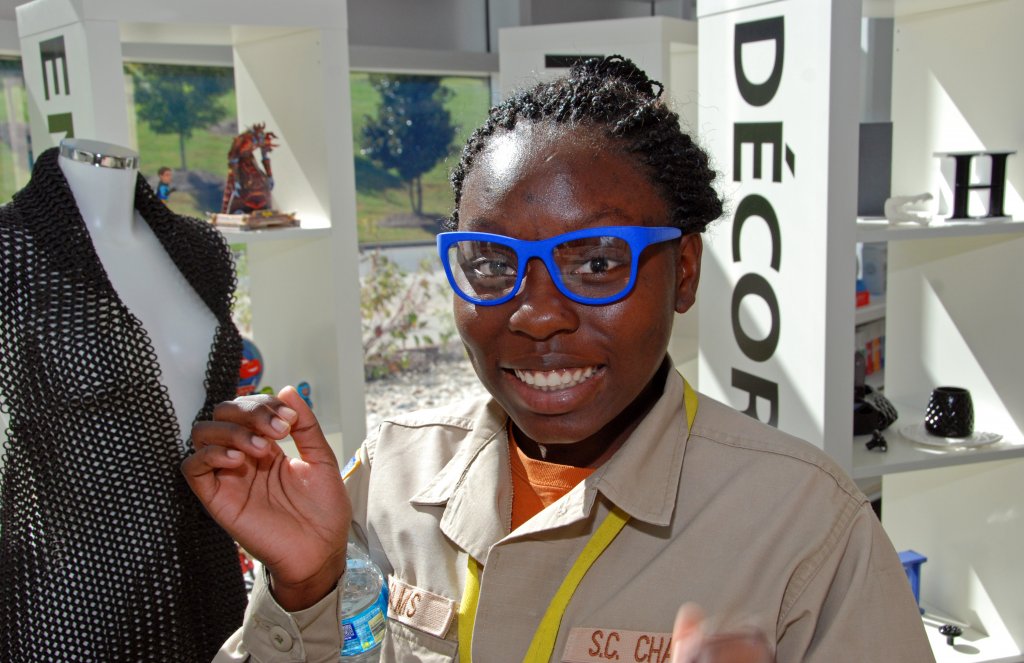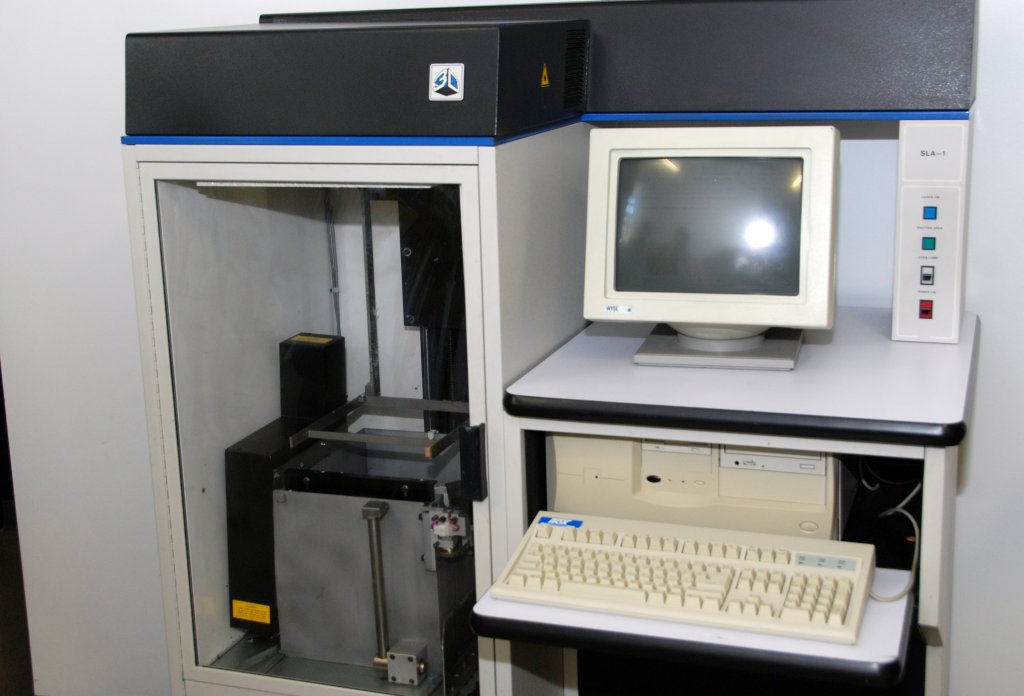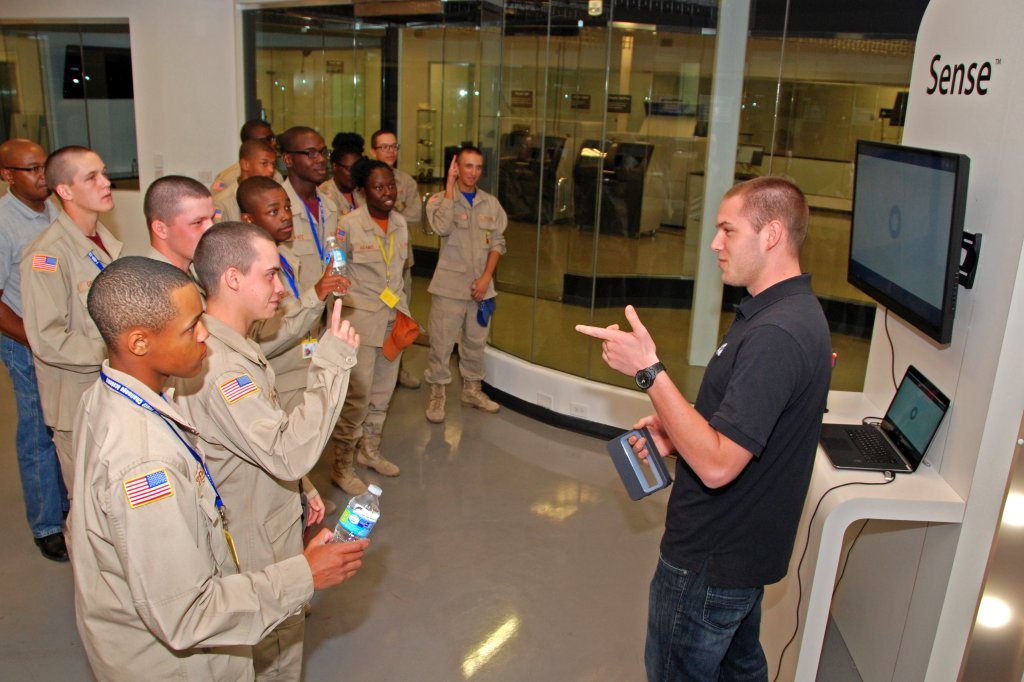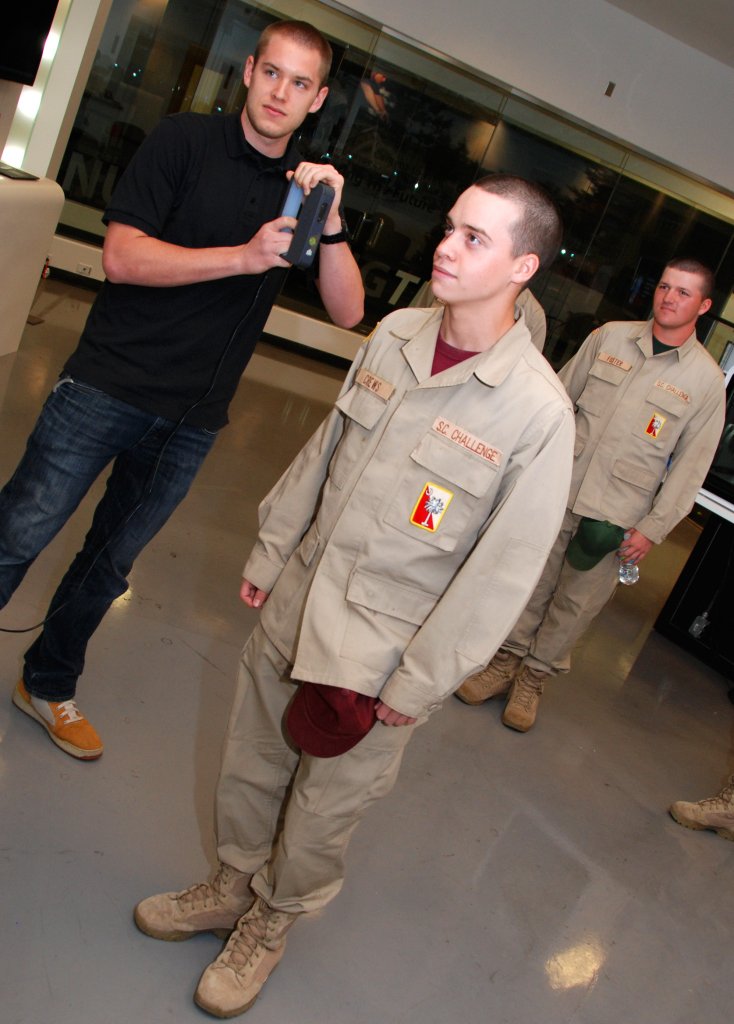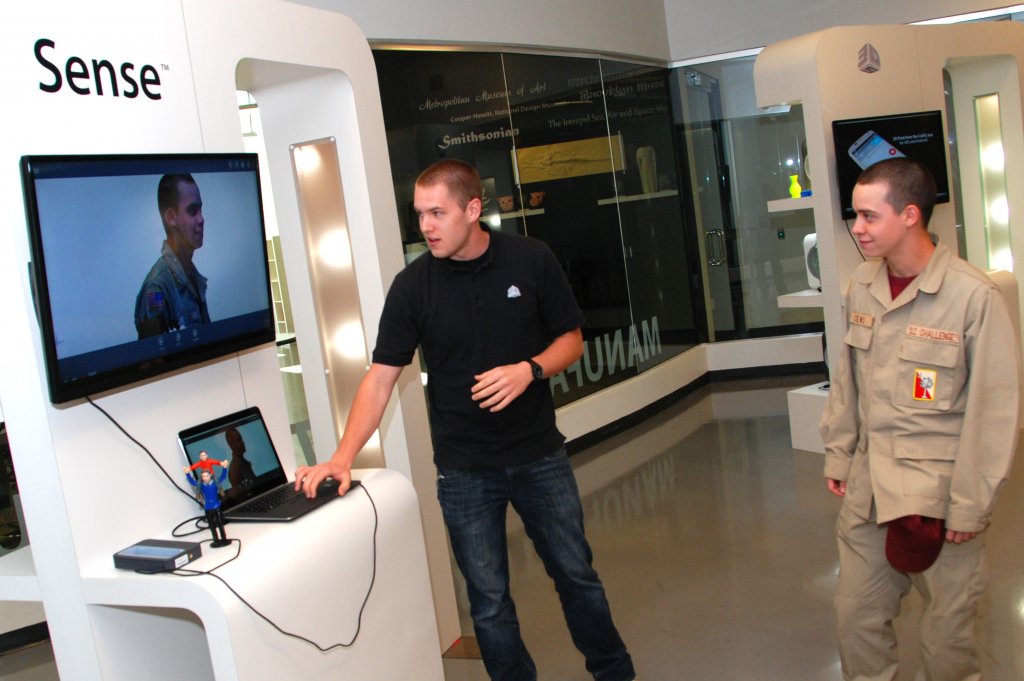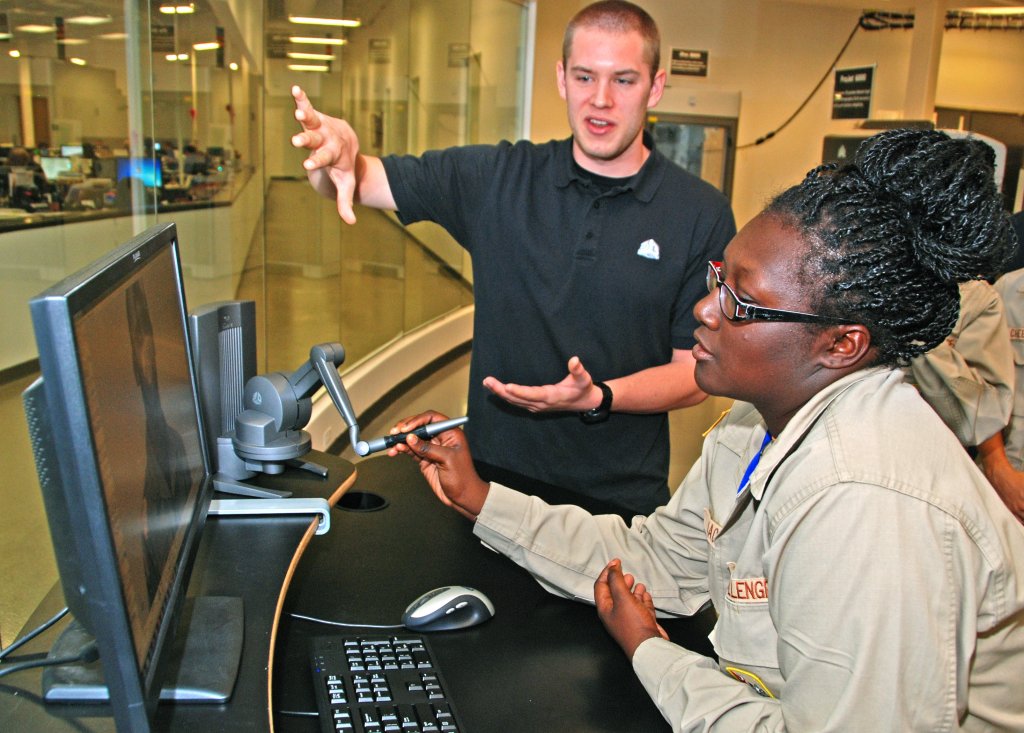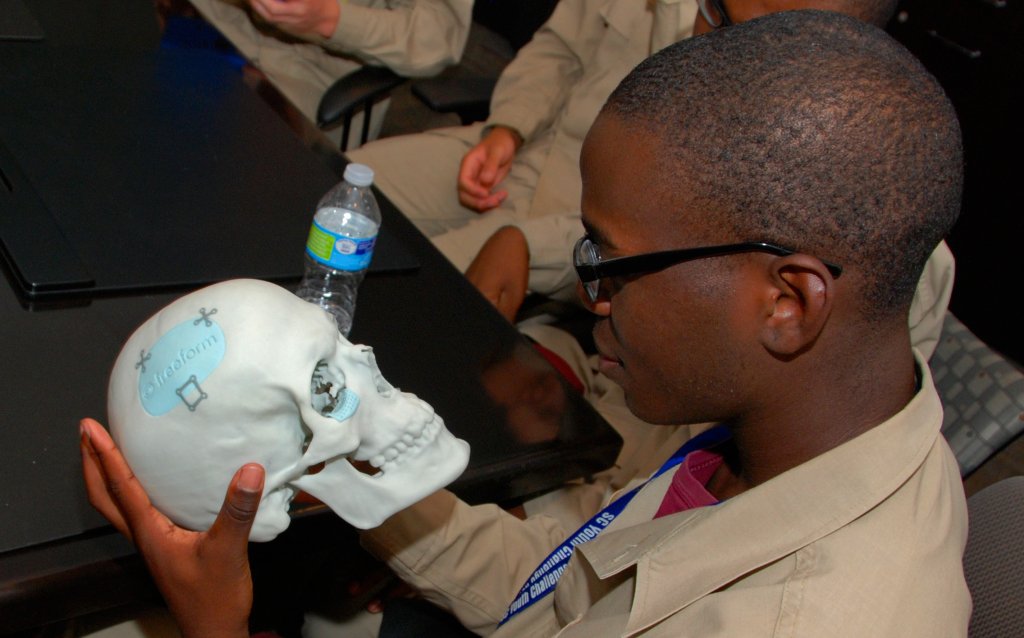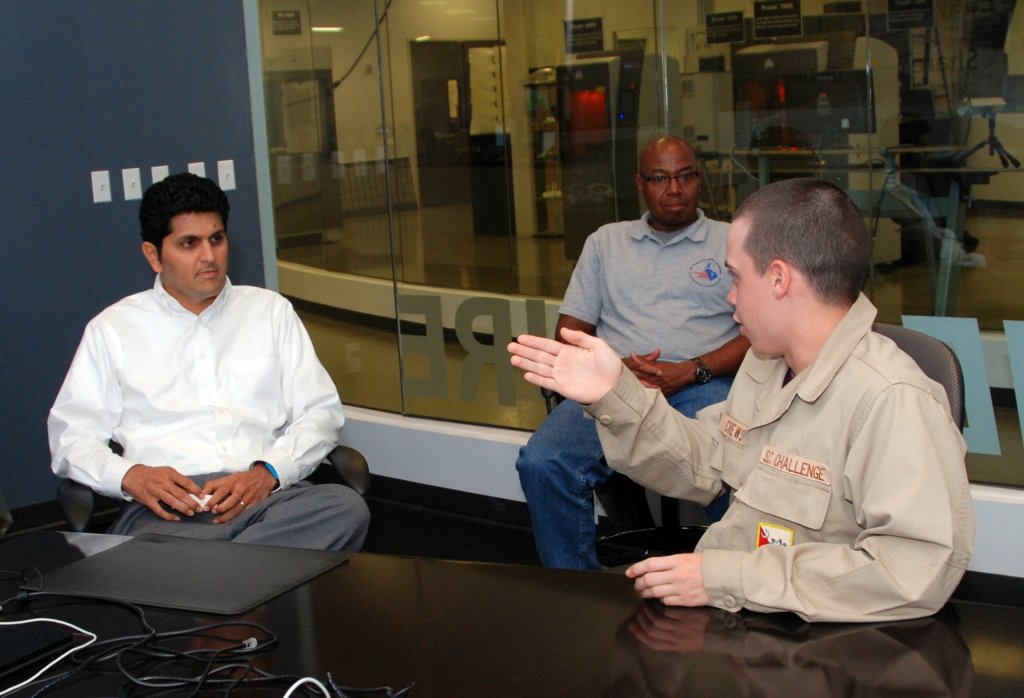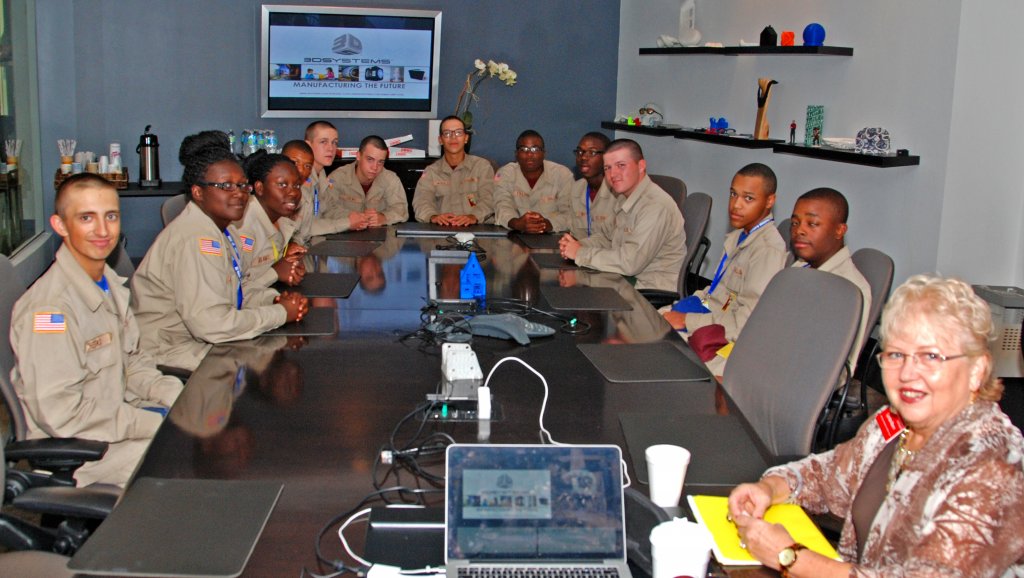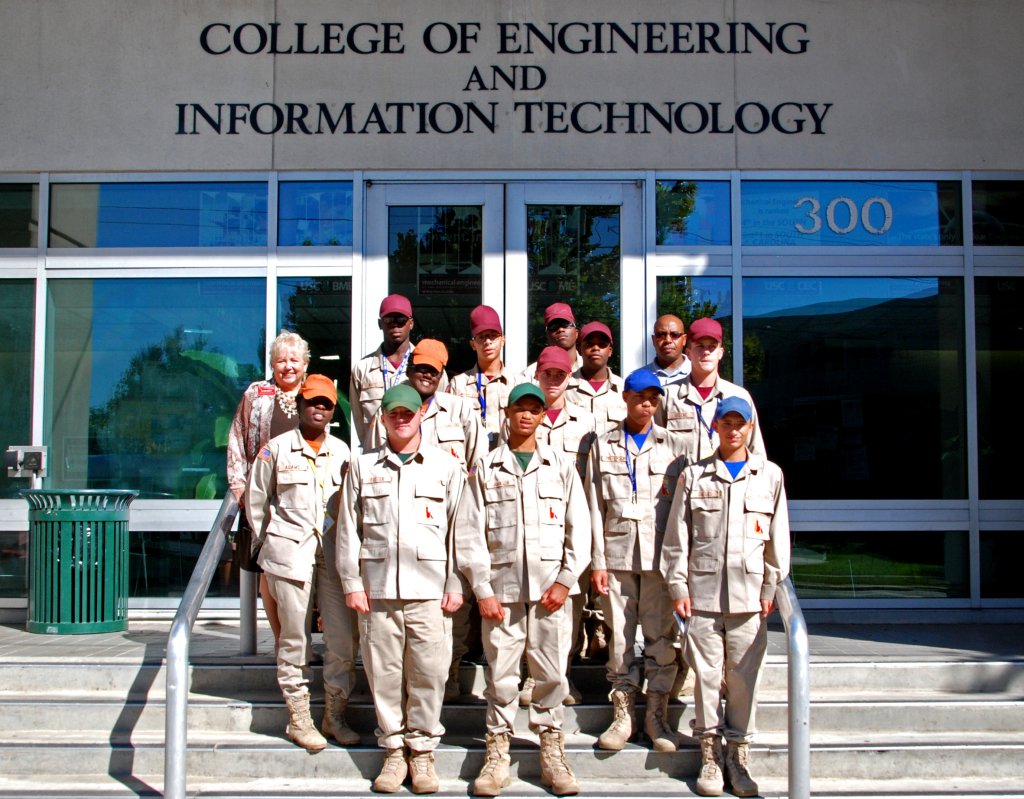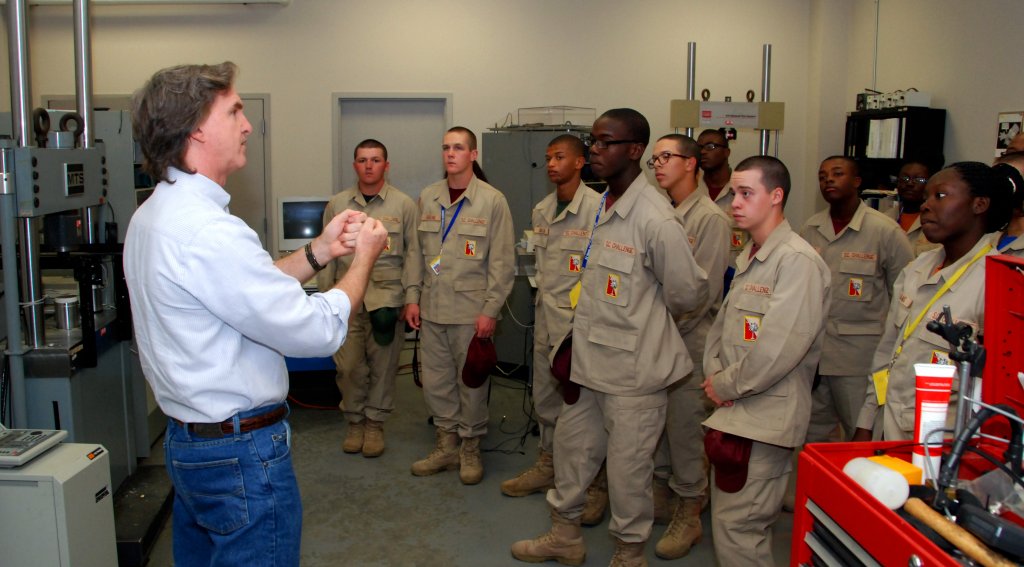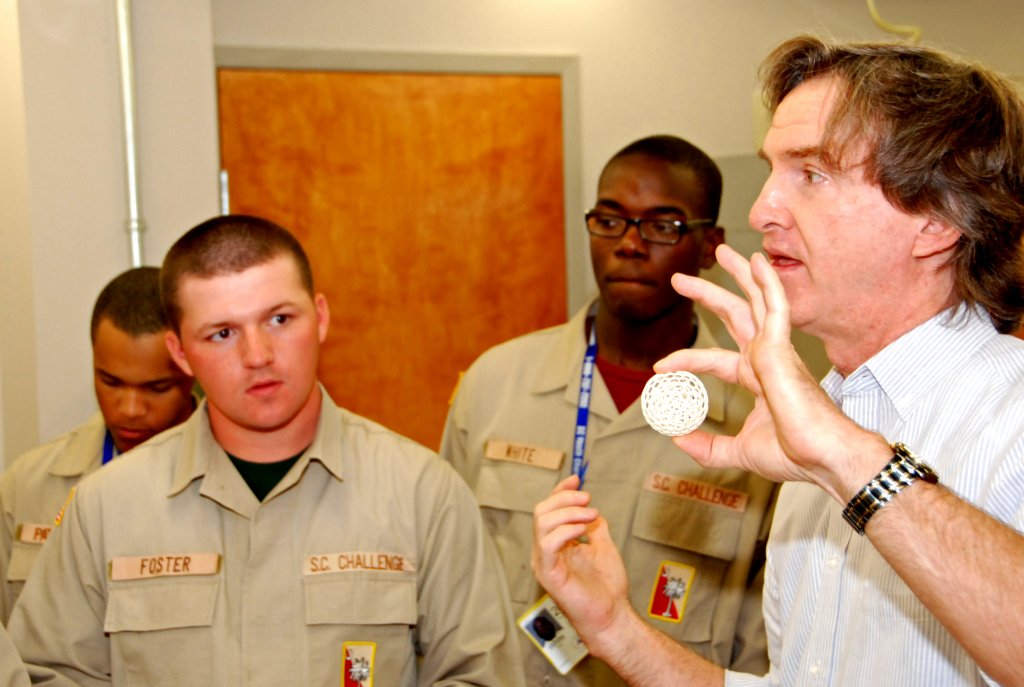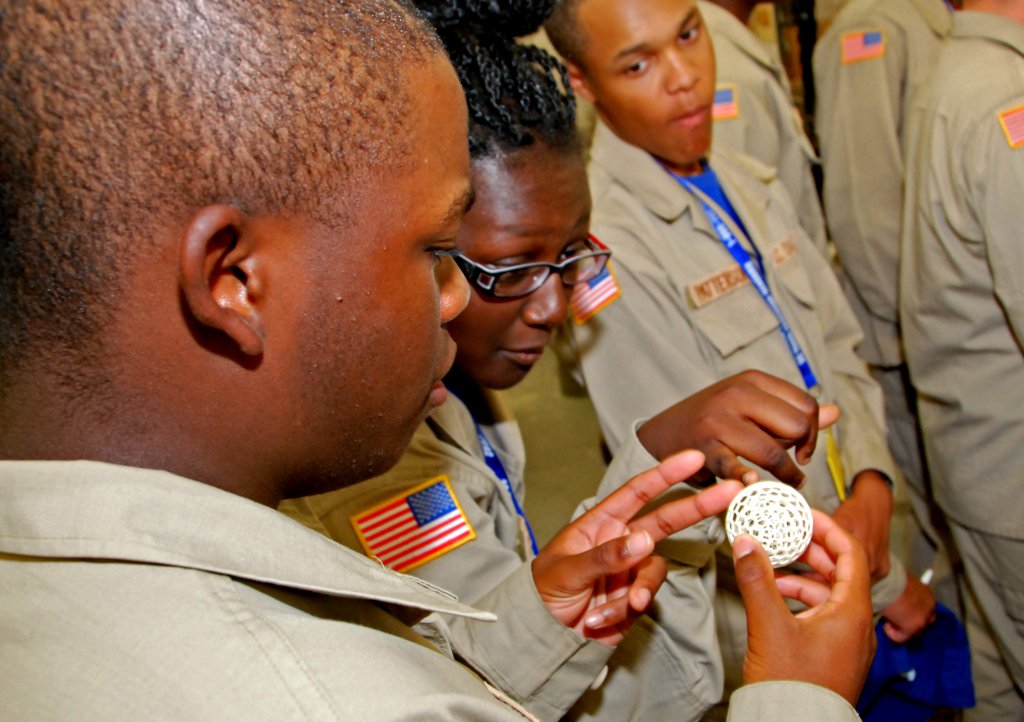In addition to teaching at-risk teens 3D design and printing, YouthQuest’s 3D ThinkLink Initiative shows them how those skills can take them places they never imagined.
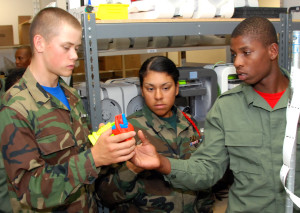
“Awesome!”
“Crazy!”
“Mind-Blowing!”
Those were a few of the reactions from the 3D ThinkLink students who toured 3D Systems headquarters in Rock Hill, SC, on Oct. 23. The visit was part of Vocational Orientation for the class from South Carolina Youth ChalleNGe Academy.
The students were fascinated by the array of advanced 3D printing technologies and products on display. They had lots of questions about the machines 3D Systems makes and job opportunities in the company, which is our strategic partner in this project.
“I got to learn things about 3D printing that I never knew before, like there are ones that use metal powder and certain machines can use up to a million different colors,” said Cadet Matthew Crews, 16.
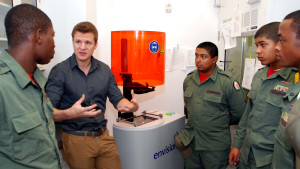
Cadet Crews enthusiastically discussed his interest in 3D printing with Rajeev Kulkarni, Vice President and General Manager of Consumer Solutions, who was just as eager to hear our students’ thoughts about the Cube 2 printers they use in class. Kulkarni also showed them the newly released Cube 3, which future 3D ThinkLink classes will use.
A week earlier, on Oct. 17, students from our classes at Maryland’s Freestate and the District of Columbia’s Capital Guardian ChalleNGe Academies, watched Cube 3 printers being assembled at the 3D Systems factory in Herndon, Va.
Those Cadets also saw how 3D printing helps create products for military, medical, automotive and aerospace customers at Prototype Productions, Inc., in Ashburn, Va. At the Maryland NanoCenter’s Tissue Engineering and Biomaterials Lab in College Park, they visited graduate students who are using 3D printing to develop vascular grafts and grow human bone.
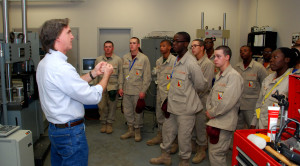
The Maryland NanoCenter, PPI and 3D Systems have generously hosted previous Vocational Orientation events. For the first time, we also took the South Carolina students to the University of South Carolina in Columbia.
Mechanical Engineering Department Graduate Director David Rocheleau led a tour of several labs where researchers use 3D printing and traditional technologies to test materials. He explained, to the students’ delight, that mechanical engineers spend a lot of their time “trying to break things and blow them up.”
At every stop, our hosts helped the students understand that they’re part of the 3D printing boom. What they’re learning seems novel to most people now, but this technology has the potential to become as commonplace and essential as the personal computer soon.
Thanks to these eye-opening Vocational Orientation experiences, our students now see there are many ways they can be part of building the 3D-printed future.

